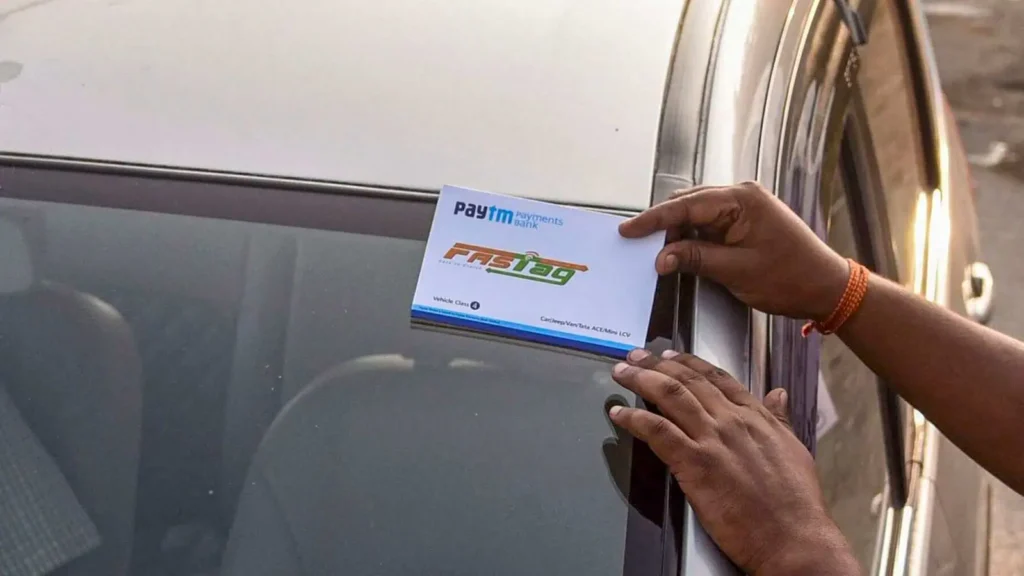Tolls have long been a part of India’s highway landscape, ensuring smooth journeys for commuters while maintaining crucial infrastructure. With the rise of digital advancements, toll collection systems like FASTag have revolutionized how we pay for road usage. But now, imagine a system beyond tags and barriers – a satellite-based tolling solution set to transform the way we navigate Indian highways. Let’s delve into this cutting-edge technology and explore its differences compared to FASTag.
What is FASTag and how does it work?
FASTag is a digital toll collection system introduced in India to streamline the process of paying toll fees. It works on Radio Frequency Identification (RFID) technology, where a small tag affixed to the vehicle’s windshield communicates with the toll booth sensors. When a vehicle passes through a FASTag lane, the RFID reader deducts the applicable toll amount from the linked prepaid account or wallet automatically. This cashless transaction not only reduces waiting time at toll plazas but also minimizes traffic congestion on highways.
The user needs to purchase and activate a FASTag by linking it to their bank account or digital wallet for seamless payments. The tag has a unique identification number that ensures accurate billing for each trip taken. With increased government initiatives promoting digital transactions, FASTag has gained popularity among commuters due to its convenience and time-saving benefits when traveling across national and state highways in India.
The Need for a Satellite-Based Toll System
Toll systems in India have long been a crucial aspect of managing traffic flow and generating revenue for infrastructure development. However, with the increasing volume of vehicles on highways, the need for a more advanced system has become evident. Enter the satellite-based toll system – a cutting-edge solution poised to revolutionize how toll collection is done across the country.
This innovative technology not only eliminates the need for physical tags like FASTag but also offers real-time tracking and monitoring capabilities. By leveraging satellite communication, this system ensures seamless toll collection without causing congestion at plazas. Moreover, it provides accurate data on vehicle movements and enables efficient management of traffic patterns.
With its potential to enhance operational efficiency and reduce manual intervention, the satellite-based toll system holds great promise in addressing current challenges faced by traditional toll systems in India.
How will the Satellite-Based Toll System work?
Imagine a toll system that doesn’t require physical tags or barriers. The satellite-based toll system in India is set to revolutionize how we pay tolls on highways. So, how does it work?
Using advanced satellite technology, vehicles will be tracked and charged for their road usage based on distance traveled. No need to stop at toll booths or worry about topping up your FASTag account anymore.
By implementing this system, the government aims to reduce traffic congestion at toll plazas and streamline the collection process. Drivers can enjoy seamless travel experiences without the hassle of waiting in long queues.
The satellite-based toll system will bring convenience and efficiency to Indian highways, making journeys smoother for commuters across the country.
Advantages of the Satellite-Based Toll System over FASTag
The upcoming satellite-based toll system in India brings several advantages over the existing FASTag technology. One key benefit is its coverage area – unlike FASTag, which requires physical infrastructure at toll booths, the satellite-based system can track vehicles nationwide without the need for additional installations.
Moreover, the satellite-based toll system offers real-time tracking and monitoring capabilities that go beyond what FASTag can provide. This means improved efficiency in toll collection and reduced instances of evasion or delays.
Additionally, with satellite technology, there’s potential for seamless integration with other transportation systems like GPS navigation and emergency services. This interconnectedness could enhance overall traffic management and safety on Indian highways.
Another advantage is increased flexibility for users as they won’t have to worry about recharging tags or specific lanes designated for electronic toll collection. The convenience factor alone makes the satellite-based system a promising advancement in India’s transportation infrastructure.
Concerns and Challenges
As with any new technology, the upcoming satellite-based toll system in India comes with its own set of concerns and challenges. One major concern is the initial cost of implementing this advanced system across the country. It will require significant investment in infrastructure and technology to ensure seamless operation.
Another challenge is ensuring that all vehicles are equipped with compatible devices to communicate with the satellite-based toll system effectively. This may take time and effort to educate and transition users from existing systems like FASTag.
Additionally, there may be apprehensions regarding data privacy and security when using a satellite-based system for toll collection. Ensuring robust cybersecurity measures will be crucial to address these legitimate concerns.
Moreover, potential technical glitches or outages in satellite communication could disrupt the smooth functioning of the toll collection process. Addressing these challenges proactively will be essential for the successful implementation of this innovative toll system across Indian highways.
Impact on Indian Highways and Commuters
The upcoming satellite-based toll system in India is poised to revolutionize the way toll collection is managed on Indian highways. By leveraging advanced satellite technology, this new system promises a seamless and efficient payment experience for commuters.
Compared to FASTag, the satellite-based toll system offers several advantages such as eliminating the need for physical tags and dedicated lanes. With real-time tracking capabilities and automatic deduction of toll charges, it ensures a smoother traffic flow and reduces congestion at toll plazas.
While there are concerns regarding privacy and data security with the implementation of a satellite-based system, addressing these challenges through robust encryption measures can help build trust among users.
The introduction of a satellite-based toll system in India has the potential to significantly impact both Indian highways and commuters by streamlining toll collection processes, reducing travel time, and enhancing overall road safety. As we look ahead to this technological advancement in transportation infrastructure, it’s essential to embrace innovation while also prioritizing user privacy and data protection.
For more, visit QAWire


